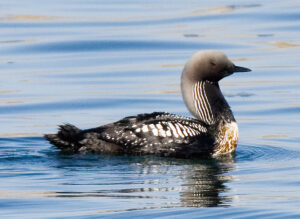
Researchers Bishop and Schaefer combined 14 years of data from at-sea marine bird surveys, collected during March 2007-2014 and 2018-2023, to identify areas of Prince William Sound where marine birds tend to gather. They identified 12 marine bird species groups and created a series of hot spot maps showing the high-use areas in Prince William Sound. Primary areas identified for prioritized protection were Hinchinbrook Entrance, the head of Port Valdez, the Knowles Head anchorage area, and the Southwest Passages.
This information will be useful to help identify areas that may need extra protection in the event of an oil spill.